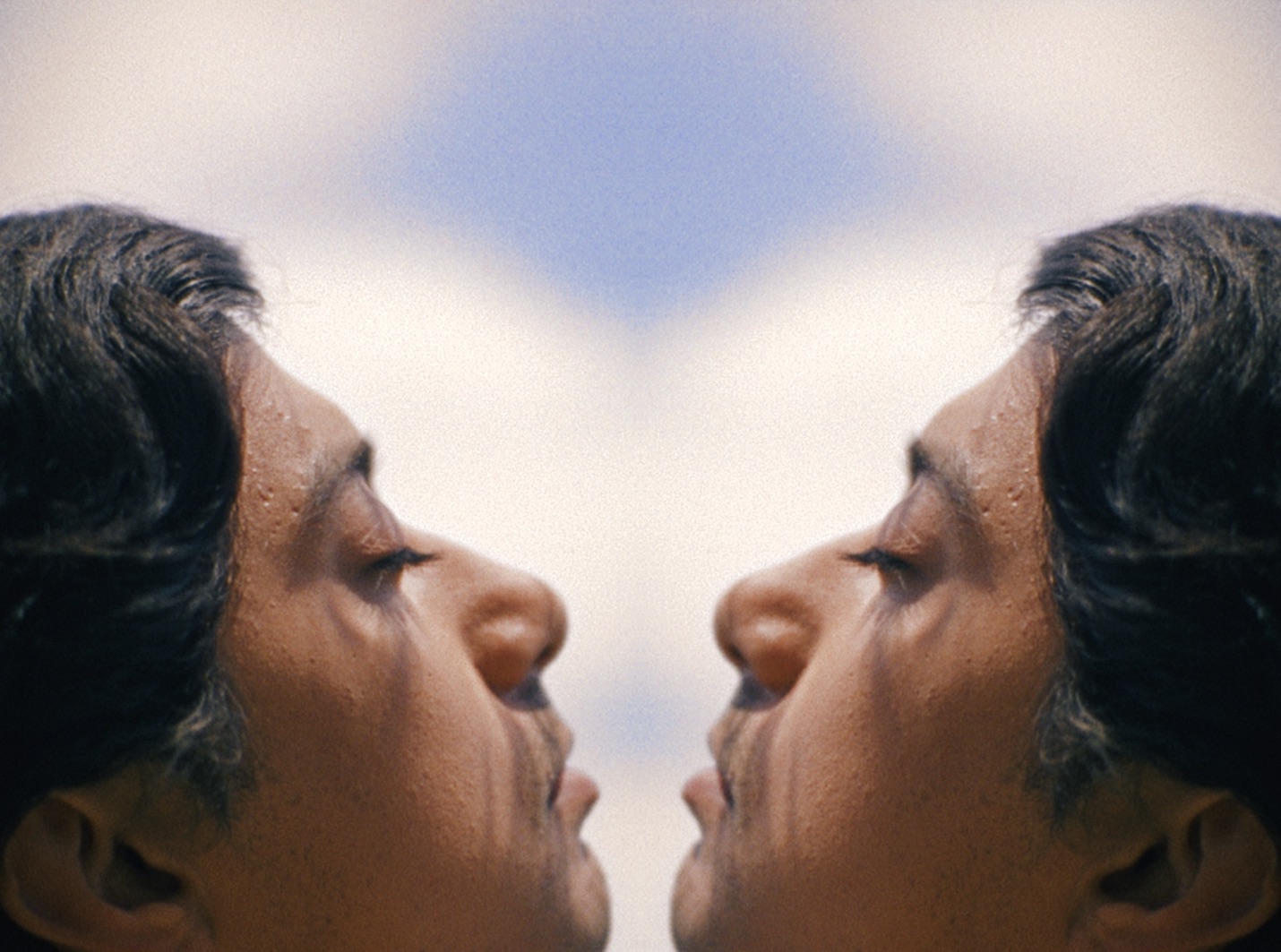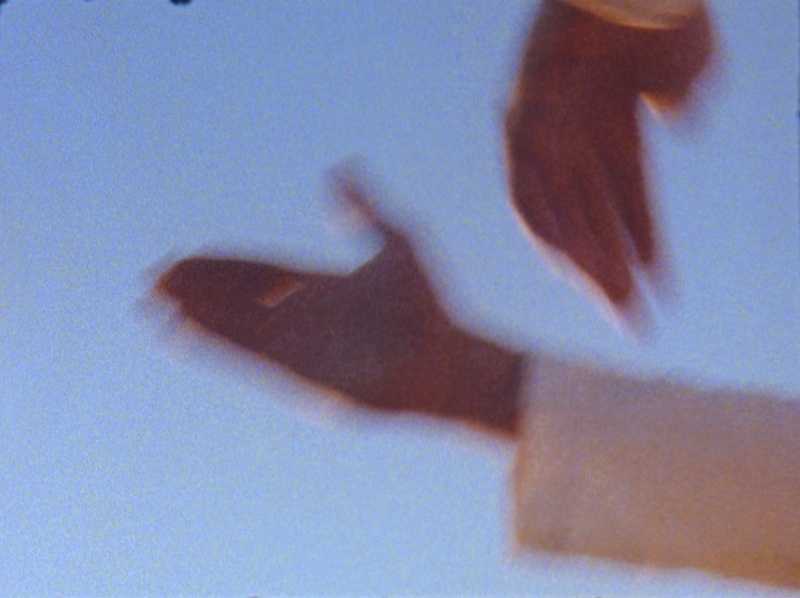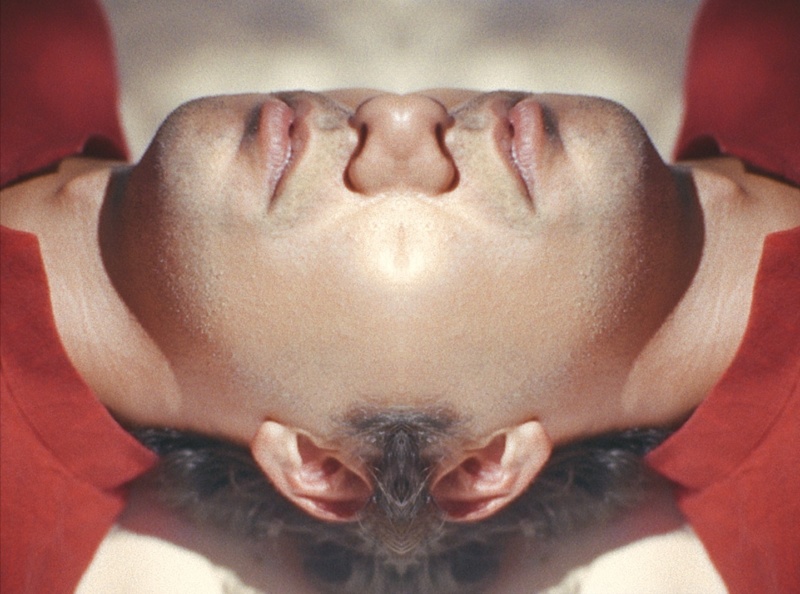
I met Zain Alam of Humeysha two years ago, when he came to Miami for a residency and stayed for the vibes. He was enamored with the ease and accessibility of time spent outdoors: in warm backyards, along the coastal shoreline, in parks on the bay. During the spring—which already felt like summer—we saw Sufi musicians Riyaaz Qawwali perform two blocks from the beach, where they played songs we’d originally heard, as children, by the late qawwali vocalist Nusrat Fateh Ali Khan; their voices reverberated, like something shimmering, to the sea.
It was the ocean, and the memory of Khan, too, that inspired Alam’s newest single, “Nusrat on the Beach,” whose melody came to him in a dream. As he writes for Talkhouse:
I woke up from a nap, and as I took a stroll down a California beach, the song structure began to assemble itself...In those days, I was consumed by Nusrat Fateh Ali Khan’s recordings. Melodies often dance across my dreams, and back then, each was steeped in the heat and hue of his music. Dreams are revered in Islam. Imagined things have a kind of existence all their own.
In the video, directed by Alam’s friend and collaborator Hannah Claire Baker, the light dances across his face, itself a refracting prism; the song, like the qawwalis of Sufi Islam, is a prayer—to romantic and erotic love, or to the divine, or perhaps to both. Alam dances underneath a blue-and-yellow sky; he wears pomelo red and devotional white. He sings of both the girl and the boy he loves, of the many possible lives he might live, of a tenderness neither spatial or temporal. The song’s longing, its own memory, lingers—the chorus references Khan’s “Yeh Jo Halka Halka Suroor Hai”—but it’s an exceptionally summery bop. All Humeysha songs embody this quality, tracing Alam’s experiences across continents, romances, states of being.
Consider his easy transition between Hindi-Urdu and English, between the Southern-rap inflections of his native Atlanta and the dream pop of his youth, between Humeysha’s future and the musical project’s origin story. Humeysha was born while Alam, who is Indian-Pakistani-American, was working as an oral historian for The 1947 Partition Archive in Berkeley, California; he traveled to India and Pakistan, interviewing those who’d lived through the partition, including a man who confessed to killing an entire Muslim family (Alam himself is Muslim). In 2015, he released his debut album Humeysha; today, he is an artist-in-residence at the South Asian American Digital Archive, where my favorite interviews with him are located.
There is so much for Alam to share—Humeysha, which translates to “always,” contains eons; sometimes it seems like the best way of retracing these histories is through music, or movement, the way Alam grooves in the video for “Nusrat on the Beach.” Storytelling is poetry, and so is song.
Can you tell me about the beginnings of Humeysha—how the project is intrinsically linked to your travels, your studies, a particular way of being you were coming into? Humeysha was how I channeled the flood of musical ideas that began the first few months I spent alone as an oral historian in India. I was based initially in Lucknow, the city of my ancestors for quite a few generations, where The 1947 Partition Archive believed I’d be most valuable as a Muslim with deep roots in the city, and given access to stories withheld even from other Lakhnavis. You needed a certain combination of keys—inherited, mostly, but some, like slow affability and a pleasure for indirect conversation, that are perhaps a happy accident of being raised in the American South. The experience was overwhelming, to say the least, especially in light of my Pakistani background.
I’d always been interested in songwriting and the dreamier reaches of guitar music, but they really blossomed into something far more serious in the overwhelming sonic soil of northern India. I relived a million memories of the partition through the witnesses I interviewed and wrote about in my research, but still needed another way to process what I was going through. Perhaps it’s not much of a surprise in retrospect, then, that an Indian-Pakistani American boy who grew up outside of Atlanta obsessed with video game soundtracks, Southern hip hop and the ambient-punk of bands like Deerhunter could only turn to music in that moment.
Tell me, also, the story of “Nusrat on the Beach”—the song, the video. Again, maybe this is repetitive but it’s very significant to me, the way a particular set of feelings was filtered into the song. Not at all repetitive! I like to think of coming back to the same question or memory or even song structure as cyclical instead, the way Sufi wayfarers might describe what emerges fresh upon their return to a way station—spiritual or physical—later in life.
“Nusrat” is similar, in some ways. It’s the first track I began working on after recording the “Departures” EP alongside a band, with the knowledge that I’d be leaving them and New York for graduate school and Islamic studies. I returned to the smaller, self-contained world of composing in solitude, without a mind for a band or the possibility of live performance—the same way I did back in India when I was learning how to record and track using Ableton for the first time. But of course I returned to that place a changed person, having put together two records and playing shows with a band.
The melody for “Nusrat” indeed began while I was on a beach in California visiting a lover for what I had a feeling would be the last time. I spent the next few months diving deep into myself, learning a lot, both about myself and about the religion I’d been raised with. In my process music always precedes lyrics, and that was especially a good thing in this case. The song ended up becoming a lovely little document of that discovery process, however dark and brooding my time in Cambridge was otherwise.
The video was shot much more recently this summer, in Mount Washington, Los Angeles. Hannah Baker is a close friend of mine, and we’d talked for years about collaborating. Even in the earliest demos, the song has always had a sense of bloom to it that she’s also been able to bring forward. It’s the dusting off of a memory old and small, till it shines and reflects on itself, from earth into air, from steadiness into abandon. She brought across a visual that really mirrors the story of song—stretching back to its evolution from ghazal [romantic poetry] to qawwali to Humeysha melody.
“Nusrat on the Beach” is inspired by memory, which feels like a theme in so many of your songs—memories of your own past, but also ancestral memory, a history you weren’t around for but carry with you. I’ve always been obsessed with tracing how certain words, ideas, and practices came to be. Why’d we speak a certain dialect of Hindi-Urdu? Why’d we socialize more with Indian Muslims who spoke our language, rather than other Pakistanis? Perhaps those answers might’ve been easier to find had I spent any time growing up in the subcontinent, but the closest similar resource I had was my grandparents. And the moment they began describing, much to my surprise, their wishes to have never left India for Pakistan, the whole dam broke open.
So the same burning curiosity about my family’s dispersion that first took to me India is the one that took me to Harvard with respect to Islam, and also the one that’s taken me to the world of Humeysha. Here in my mind, I wrestle with a few notes from Nusrat Fateh Ali Khan to find a chorus melody—in physical space—with guitars and santoors run through the effect chain usually reserved for another, to find an affinity for the two I’ve long thought might exist but only now have the skill to manifest.
The wellspring of memory runs very deep. But as someone dedicated to a culture of life rather than mechanical reproduction, I’m careful not to call this “nostalgia.” All memory is really a mode of active reinvention, so let’s be true to that before any political demand of “preservation.” I’m wary of those projects that can so easily slip into essentializing a culture and the consequent erasure of the minority voice, as we’re seeing around the world now and in diasporas.
With regards to memory, you grew up listening to many genres of music. The looping and sampling in Humeysha’s songs, the dream pop, the tones of qawwali and raga, southern and Northeastern hip hop—it’s all there. I hear a lot of feelings in there! Your hearing is right on! Especially the note on a lot of feelings—thank you. That’s one aspect of melodies in Bollywood I’ve always felt attached to—the way a sweet, syrupy voice can convey joy and sadness at once using just a few notes that rise one way and fall another in classic raga fashion.
I think an early addiction to video game soundtracks also gave me a love for melodies that are endlessly loopable. You can naturally trace how that took me to post-rock, ambient and hip hop before coming full circle to the Bollywood and qawwali I heard from day one.
When you came to Miami for a residency, you mentioned you were looking forward to working and praying. This is probably a brutally romanticized notion, but: Prayer is part of your own personal spiritual practice. Is making music a kind of prayer, in any way? Sometimes we forget that Islam came to the Prophet not in writing but as the Word whispered in his ears, heard in a dream after a lifetime of meditating alone in the Cave of Hira. It was a way of life spread by, from and for bodies. Watch the way we pray and fast and make pilgrimage and you understand it’s a means of orienting the body and preparing it perhaps for something higher.
In that light, making music is a devotional practice, yes. How can I work to make meaning from all the sounds I’ve heard in the past, and the ones I envision as possibilities? I’ve got to listen closely to myself and to the world around me in an active way—the same way I mentioned how we make memories our own through labor rather than mere inheritance.
In traditions like qawwali and dance music, the power of repetition and groove induces a feeling of belonging that can transcend the individual, however fleeting. I’m not there yet and don’t know if I ever will be, but I’m always amazed by the possibility of making music that becomes the shared vocabulary of a community. Nusrat is close to—if not already!—that for many across the world.
You sing in both English and Hindi-Urdi. We hear a lot about how language is limiting, but I think the slippage between languages is really powerful. Totally. As an artist my desire to sing in Hindi-Urdu came first and foremost out of love for how it sounds. I can still listen to recordings of my conversations with my grandmother and float away on the gentle lilt of her voice, the astonishing metaphors she’d use to describe a feeling where one word might have been more “efficient.” People from that time and part of the world had their own special, poetic way of being. I don’t think any of us will be recreating it any time soon but carrying the spirit forward would be an honor.
And then of course I’m sure you, as a child of immigrants yourself in a place like Miami, can understand the desire to resist total assimilation. That distance and slippage between languages is critical soil for imagining different modes of being. Back in “Burma Between You and Me,” I tried to highlight how Hindi-Urdu does that in its inversion of doer-doing—where it is action that works upon the actor rather than vice-versa.
What’s next—what are you working on right now? I’m pretty thrilled about a recent demo I’ve been obsessed with the past couple of weeks. Acoustic guitars—which I haven’t used since a track on LP one—have found their way back, to my surprise. Who knew how good they could sound alongside a santoor and tabla? The Jazzmaster [guitar] is an integral part of the Humeysha sound, but I think it’ll enjoy taking a break this time around. Fingers crossed you get to hear this one sometime next year, inshallah.
In celebration of their new EP, “Nusrat on the Beach,” Humeysha performs at The Sultan Room on October 29. Friends Fusilier and rapper/visual artist DonChristian share the bill.






